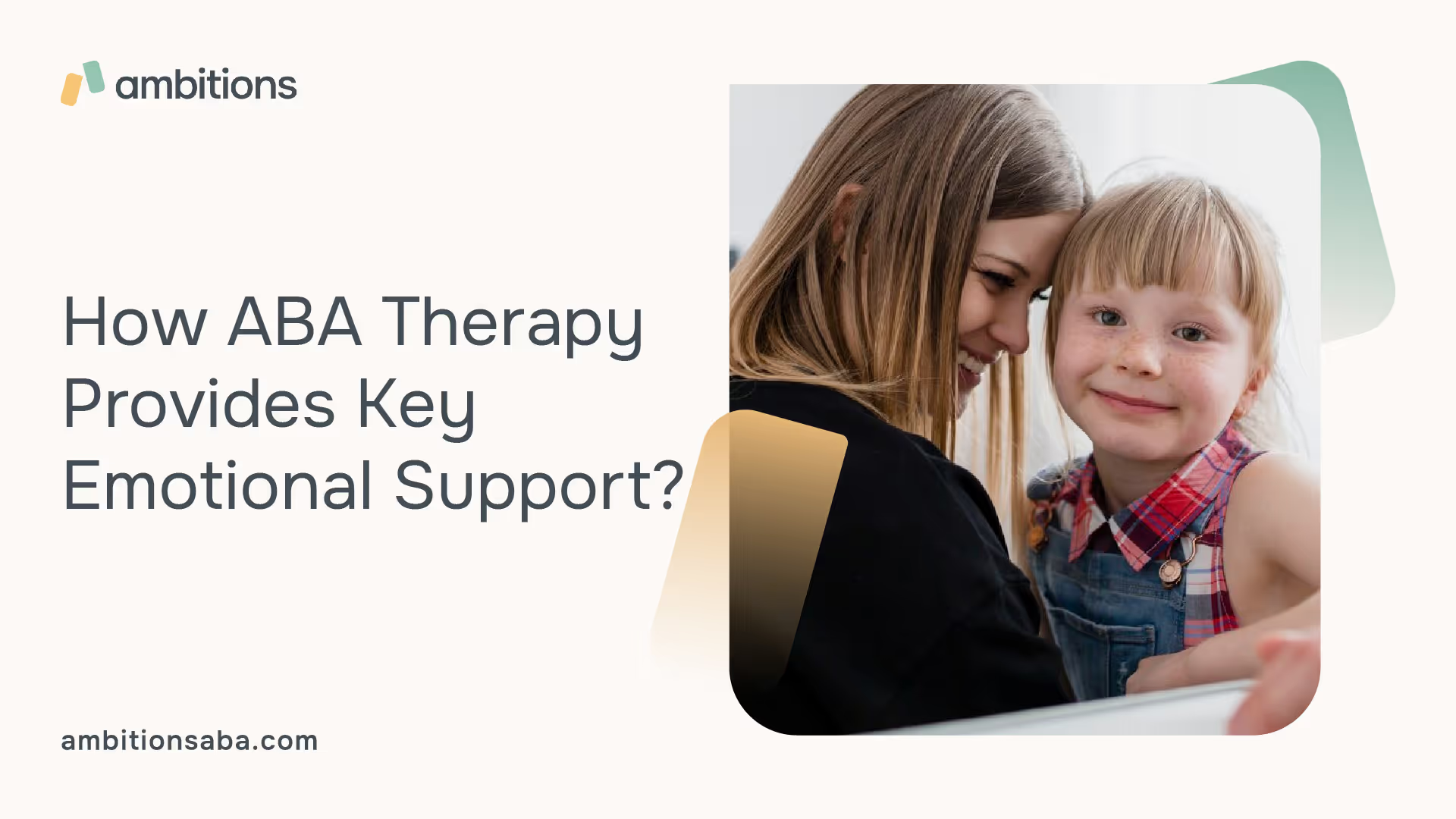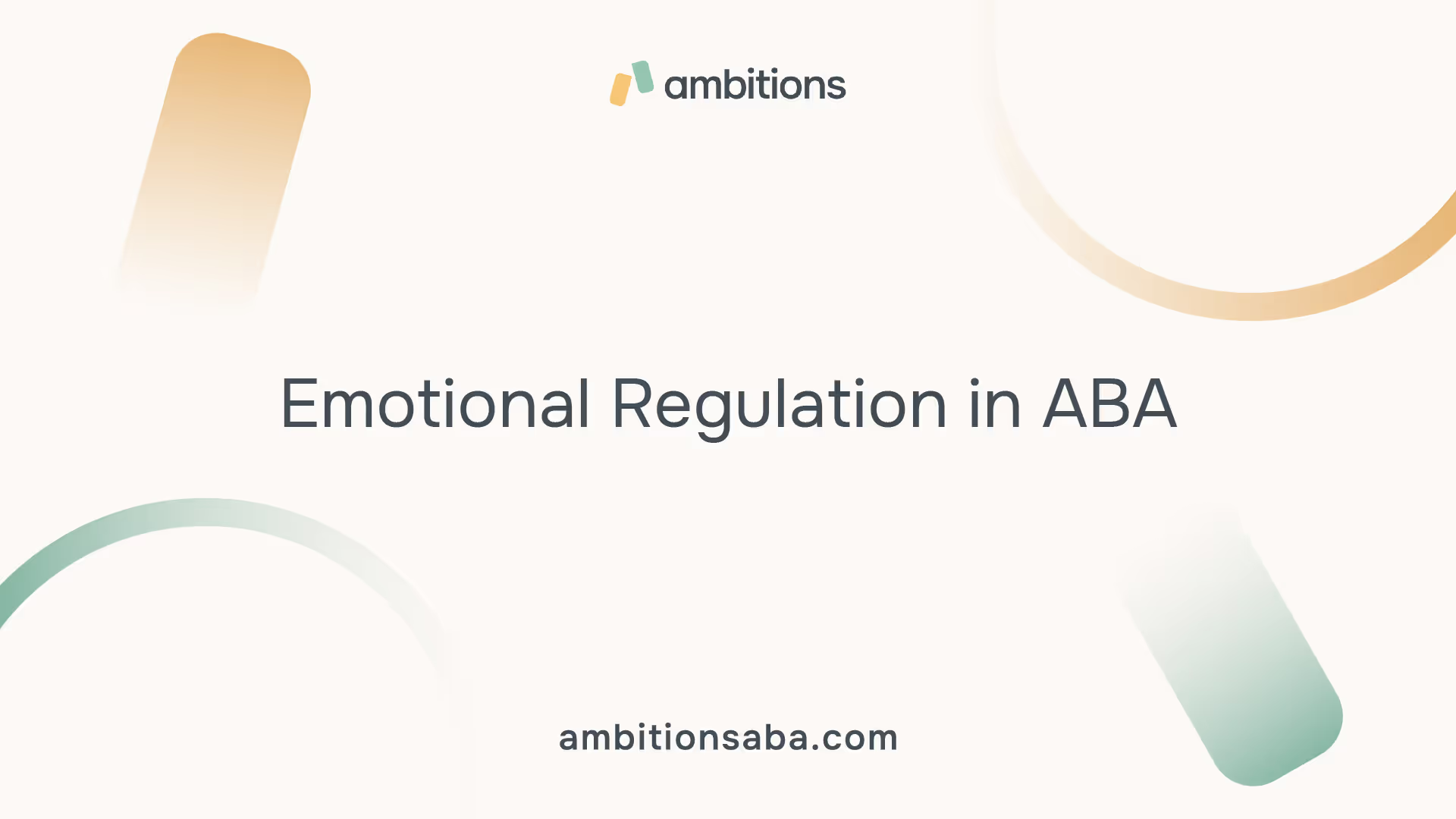Learn about autism evaluations and early intervention. Discover the benefits of diagnosis and personalized treatment plans for individuals with autism.

Understanding ABA Therapy
Basics of ABA Therapy
ABA therapy, which stands for Applied Behavior Analysis therapy, is a widely recognized approach designed to assist individuals with autism and related developmental disorders. A board-certified behavior analyst (BCBA) is responsible for creating and overseeing ABA programs tailored to each learner's unique skills, needs, interests, and family circumstances [1].
At its core, ABA therapy employs positive reinforcement as a primary strategy. This means that when a desired behavior is followed by a reward, the individual is more likely to repeat that behavior in the future. Over time, this method encourages lasting positive behavior changes, making it an effective tool for many children diagnosed with autism.
- Individualized Programs: Customized to each child's specific needs and preferences.
- Positive Reinforcement: Encourages desired behaviors by rewarding them.
- Behavior Analysis: Focuses on understanding and improving behavior.
Benefits of ABA Therapy
ABA therapy is recognized as an evidence-based best practice treatment by both the US Surgeon General and the American Psychological Association. Numerous studies—over 20—demonstrate its effectiveness in improving outcomes for individuals with autism.
The benefits of ABA therapy span various aspects of development, leading to significant improvements in areas such as intellectual functioning, language development, daily living skills, and social functioning. By providing structured support, ABA therapy paves the way for enhanced quality of life for individuals with autism.
- Intellectual Functioning: Enhancements in cognitive skills and problem-solving abilities.
- Language Development: Increased communication skills and vocabulary.
- Daily Living Skills: Improved independence in routine tasks.
- Social Functioning: Better interaction and relationship skills with peers.
Understanding ABA therapy equips parents with the knowledge needed to support their children effectively and foster their development.

Role of Positive Reinforcement
Positive Reinforcement in ABA
Positive reinforcement is a core element of ABA therapy, playing a significant role in encouraging desired behaviors. This approach is based on the principle that individuals are more likely to repeat a behavior if it is followed by something valued, such as a reward. By utilizing positive reinforcement, ABA therapists can effectively promote positive behavior changes over time.
In ABA therapy, rewards can take various forms, including verbal praise, tokens, or small prizes. The key is to provide these rewards immediately after the desired behavior occurs, reinforcing the connection between the action and the positive outcome. This method is particularly effective for children diagnosed with autism, as it helps them adapt to social situations and encourages repetition of socially appropriate behaviors.
- Verbal Praise: Encouragement or compliments given for positive behavior.
- Tokens: Small items earned for good behavior that can be exchanged for larger rewards.
- Tangible Rewards: Physical items such as toys or treats given as incentives.
Impact of Positive Reinforcement
The impact of positive reinforcement in ABA therapy is profound, particularly in supporting children with autism spectrum disorder (ASD). Studies have shown that rewarding desired behaviors significantly increases the likelihood of their repetition over time.
Furthermore, ABA therapy employs various strategies to enhance emotional regulation through positive reinforcement. These strategies include using emotion charts, modeling appropriate behavior, and teaching coping mechanisms to help children learn critical emotional regulation skills.
Positive reinforcement not only aids in behavior modification but also helps children develop essential social skills. By breaking down complex behaviors into smaller, manageable components, ABA therapy enables children to learn new skills and reduce challenging behaviors effectively [5].
In summary, the use of positive reinforcement in ABA therapy provides crucial emotional support, helping children with autism navigate social situations and develop lasting, positive behaviors.

Emotional Regulation in ABA
Importance of Emotional Regulation
Emotional regulation is vital for children diagnosed with autism spectrum disorder (ASD). It plays a key role in developing relationships, maintaining overall health, and navigating various social situations. Children with ASD may face challenges in recognizing and expressing their feelings, which can lead to difficulties in social interactions.
By focusing on emotional regulation through ABA therapy, children can learn to manage their emotions effectively, reducing instances of emotional dysregulation. This dysregulation can manifest in behaviors such as biting, hitting, tantrums, social withdrawal, self-injury, and extreme silliness. Providing support in this area helps create a more positive environment for both the child and their family.
Strategies for Emotional Regulation
ABA therapy employs various strategies to assist children in developing essential emotional regulation skills. These strategies enable them to recognize and express their emotions appropriately. Here are some effective methods used in ABA therapy:
- Emotion Charts: Visual tools that help children identify and label their emotions.
- Modeling Behavior: Demonstrating appropriate emotional responses to various situations.
- Feedback and Reinforcement: Providing positive feedback and reinforcing good behavior to encourage emotional expression.
- Encouraging Social Interaction: Promoting engagement with peers to practice emotional skills in real-life scenarios.
- Teaching Coping Mechanisms: Equipping children with strategies to manage overwhelming feelings and situations.
These strategies collectively support children with ASD in navigating their emotions, leading to improved interactions and overall quality of life. Additionally, understanding ABA therapy for behavioral analysis can further enhance the effectiveness of these approaches.
Integrating Therapies
Integrating different therapeutic approaches can provide comprehensive support for children diagnosed with autism. This section explores how ABA therapy works in conjunction with behavioral therapy and cognitive behavioral therapy to enhance emotional support and overall development.
ABA and Behavioral Therapy
Combining ABA therapy with behavioral therapy can be highly beneficial for individuals with autism spectrum disorder (ASD). This integration leverages techniques from both therapeutic orientations to address a child’s unique challenges and tailor treatment to their specific needs.
The integrative approach aims to create a comprehensive treatment plan that effectively addresses the complex needs of individuals with ASD. By utilizing strategies from both therapies, practitioners can enhance the effectiveness of interventions, leading to improved outcomes for children.
Focus:
- ABA Therapy: Behavior modification
- Behavioral Therapy: Understanding behavior through context
Techniques:
- ABA Therapy: Positive reinforcement
- Behavioral Therapy: Identifying triggers and coping strategies
Goals:
- ABA Therapy: Skill acquisition and reduction of problem behaviors
- Behavioral Therapy: Enhancing emotional and social functioning
ABA and Cognitive Behavioral Therapy
Integrating ABA therapy with Cognitive Behavioral Therapy (CBT) can also yield significant benefits. This combination allows therapists to address a wider range of challenges concurrently, leading to enhanced outcomes for children with ASD.
CBT focuses on identifying and changing negative thought patterns, while ABA emphasizes behavior modification through reinforcement strategies. Together, these approaches can help children develop not only the skills needed for everyday tasks but also the emotional regulation necessary for social interactions.
Focus:
- ABA Therapy: Observable behavior
- Cognitive Behavioral Therapy (CBT): Thoughts and feelings that influence behavior
Techniques:
- ABA Therapy: Reinforcement strategies
- CBT: Cognitive restructuring and coping skills
Goals:
- ABA Therapy: Improve specific behaviors
- CBT: Change negative thought patterns and develop coping strategies
By integrating these therapeutic modalities, parents can better support their children in managing emotional challenges. This holistic approach enhances the effectiveness of ABA therapy and emotional support, allowing for a more rounded strategy in helping children with autism thrive.
Criticisms and Defenses
Criticisms of ABA Therapy
ABA therapy has faced several criticisms from various advocates and practitioners. Some autistic self-advocates argue that ABA therapy aims to make autistic children conform to neurotypical standards, which may not consider the unique needs of each child. They suggest alternative approaches, such as speech and language therapy, which might better support skill-building and independence in autistic children.
Another significant criticism is that ABA therapy often focuses excessively on eliminating undesirable behaviors rather than on building essential skills. Some practitioners acknowledge this concern and stress the need to emphasize what children should be doing instead of what they shouldn't be doing.
- Focus on Neurotypical Standards: ABA may push autistic children to conform to typical behaviors, potentially neglecting their individual needs.
- Elimination vs. Skill Building: The emphasis on reducing undesired behaviors can overshadow the importance of teaching new, functional skills.
Defending ABA Therapy
Supporters of ABA therapy argue that the primary goal is not to erase neurodiversity in autistic children but rather to promote their independence and improve their quality of life. ABA is designed to manipulate environmental variables to facilitate behavior change while respecting the individual's neurodiversity.
Defenders assert that when implemented correctly, ABA can significantly enhance social communication, daily living skills, and overall emotional support. It is a structured approach that can help children navigate social situations and improve their interactions with peers and adults. For more insights on how ABA therapy can enhance communication skills, visit our article on aba therapy and social communication.
- Promotes Independence: ABA aims to empower autistic children by teaching them skills that foster self-sufficiency.
- Environmental Manipulation: The therapy focuses on adjusting surroundings to encourage positive behavior changes without disregarding neurodiversity.
Understanding these criticisms and defenses can help parents make informed decisions about whether ABA therapy is the right choice for their child's emotional support and development.
Evolving Approaches
ABA therapy has undergone significant evolution over the years, adapting to the needs of individuals with autism and their families. This section explores modern techniques and complementary therapies that enhance the effectiveness of ABA therapy.
Modern ABA Techniques
Today's ABA therapy incorporates various innovative techniques that cater to the unique needs of children diagnosed with autism. These methods break down complex behaviors into smaller, manageable components, making learning more accessible and effective. Some of the modern techniques include:
- Pivotal Response Training: This approach focuses on key areas of development, such as motivation and self-management. It encourages spontaneous communication and emphasizes the child's interests.
- Early Start Denver Model (ESDM): Specifically designed for young children, this method combines ABA principles with developmental strategies to promote social, communication, and cognitive skills in a naturalistic setting.
Research indicates that these modern techniques have produced positive and lasting outcomes, significantly improving communication, social skills, and adaptive behaviors in children with autism. The flexibility in applying these techniques allows therapists to tailor interventions to meet each child's unique needs.
Complementary Therapies in ABA
Integrating ABA therapy with complementary therapies can enhance the overall effectiveness of treatment plans. Many professionals have found that combining ABA with therapies such as speech therapy and occupational therapy leads to improved outcomes for children.
- Speech Therapy: This therapy focuses on enhancing communication skills, which can be beneficial when integrated with ABA methods that reinforce social communication.
- Occupational Therapy: This approach supports the development of daily living skills and sensory processing, making it a valuable addition to ABA therapy.
By utilizing these complementary therapies, families can create more holistic treatment plans that address various aspects of their child's development. Parents seeking to understand how these integrated approaches can benefit their child should explore aba therapy for autism diagnosis and aba therapy for behavioral analysis.
As ABA therapy continues to evolve, it provides key emotional support through its adaptive techniques and integration with other therapeutic approaches. This evolution reflects a commitment to improving the quality of life for individuals with autism and their families.
References
[1]: https://www.autismspeaks.org/applied-behavior-analysis
[2]: https://www.bigdreamersaba.com/blog/benefits-of-aba-therapy
[3]: https://www.webmd.com/mental-health/what-is-applied-behavior-analysis
[4]: https://heartlinksaba.com/emotional-regulation-in-aba/
[5]: https://theautismimpactcircle.com/what-is-aba-therapy-everything-you-need-to-know/
[6]: https://www.crossrivertherapy.com/autism/aba-therapy-and-behavioral-therapy-integration

